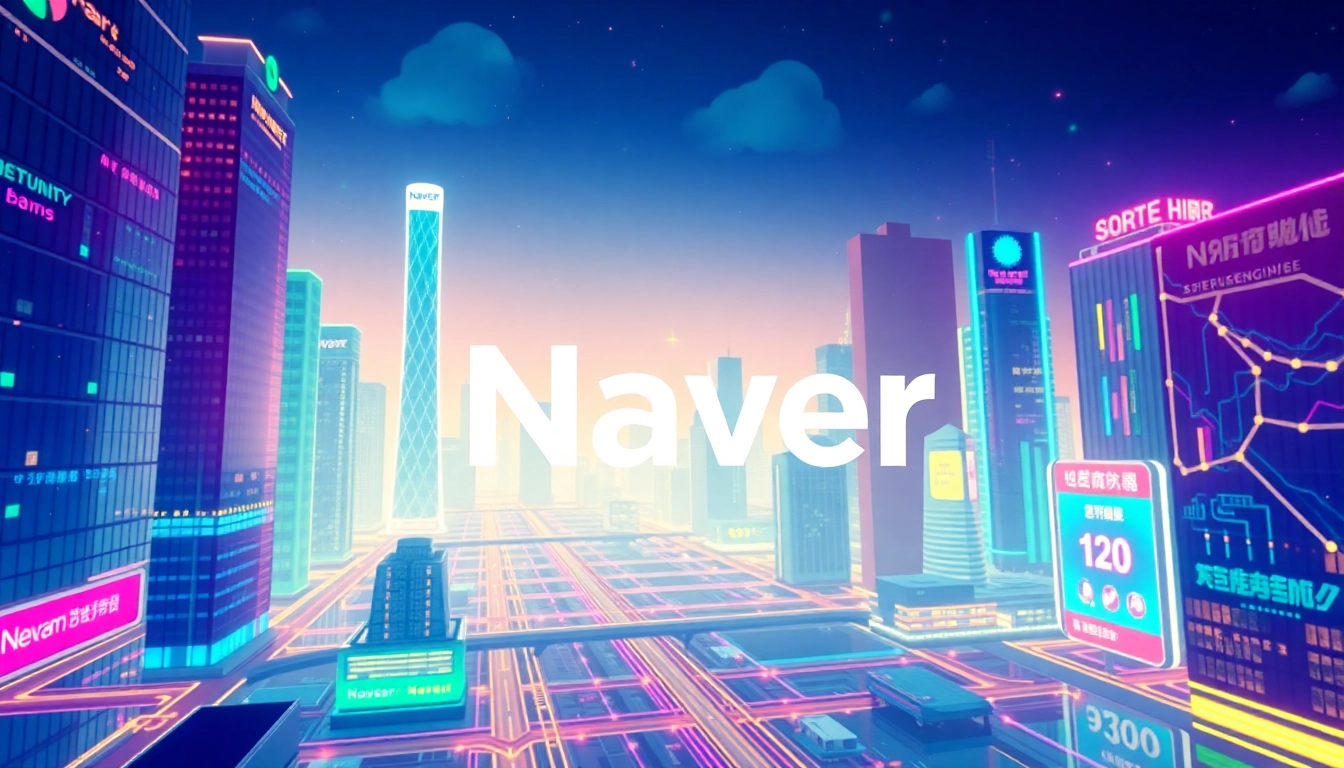Understanding the Human or Not Game: Purpose and Mechanics
In an era where artificial intelligence (AI) is rapidly advancing, the ability to distinguish between human and machine-generated responses is becoming increasingly crucial. The human or not game positions itself at this intersection, serving both as a captivating entertainment and a meaningful exploration of AI’s evolving capabilities. This social Turing game invites players to engage in brief, two-minute conversations with anonymous entities, challenging them to decipher whether they are interacting with a human or an AI entity. Its core purpose is to not only entertain but to deepen understanding of AI behavior, human communication cues, and the subtle nuances that define authentic human interaction.
What is the Human or Not AI Game?
The Human or Not AI game is an interactive online platform that simulates a social chat environment where players converse with anonymous partners—either humans or AI bots powered by some of the latest AI technologies, like GPT-4. The main objective is straightforward: after a brief conversation, the player guesses whether their partner is human or an AI. This task, seemingly simple, becomes increasingly complex as AI systems improve their ability to mimic human nuances, idiomatic expressions, and emotional cues. The game’s design emphasizes real-time, conversational engagement, creating a dynamic testing ground for human perception and AI realism.
How Does the Game Work Step-by-Step?
- Initiate a Chat: Players start a session via the web platform, which pairs them with an anonymous conversational partner, either human or AI.
- Engage in Conversation: For two minutes, the player exchanges messages. The platform ensures that responses are generated or relayed without disclosing the true nature of the partner.
- Observe and Analyze: Throughout the chat, players pay close attention to response patterns, language use, emotional cues, and response speed.
- Make an educated Guess: After the two-minute mark, players are prompted to select whether their partner is human or AI.
- Reveal and Learn: The correct answer is disclosed immediately after the guess, allowing players to compare their intuition with the reality and improve their detection skills over time.
This process is designed to be seamless, engaging, and educational, with a focus on honing observational skills and understanding AI’s conversational prowess.
Why Is It Relevant in Today’s AI Landscape?
The evolution of AI technologies such as GPT-4, conversational agents, and chatbots has blurred the lines between human and machine communication. As AI systems become more sophisticated, they can generate responses that are increasingly indistinguishable from those of humans, raising questions about authenticity, trust, and the future of digital interaction.
In this context, the Human or Not game transcends entertainment; it serves as a practical tool for understanding AI’s current capabilities, limitations, and ethical considerations. It also helps users develop a critical eye for detecting AI-generated content, which is essential amid widespread concerns about misinformation, deepfakes, and automation in social and professional domains.
Furthermore, the game fosters awareness about the societal impact of AI, including privacy issues, data security, and the importance of transparent AI deployment. By engaging actively with AI in a controlled environment, players become more literate in AI interaction, better equipped for real-world scenarios where distinguishing between human and machine communication is vital.
Strategies to Improve Your Human or Not Skills
Recognizing Subtle Clues in Responses
Mastering the art of differentiating AI from humans hinges on keen observation. Here are nuanced cues to watch for:
- Response Consistency: AI responses often maintain uniform tone and style, whereas human replies may fluctuate based on mood or context.
- Handling of Ambiguity: Humans might interpret ambiguous questions with humor, sarcasm, or personal anecdotes, while AI responses tend to be literal or overly formal.
- Emotional Nuance: Subtle emotional expressions, such as empathy or humor, are harder for AI systems to mimic convincingly, especially in complex social contexts.
- Response Speed and Pattern: AI often generates responses with consistent speed and may exhibit repetitive patterns or phraseologies, unlike humans who might take longer to process or introduce variability.
Practicing regular observation and note-taking helps sharpen these instincts, enabling more accurate guesses over time.
Using Question Techniques to Spot AI
Strategic questioning can reveal the underlying nature of your conversation partner. Techniques include:
- Open-Ended Questions: Pose questions that require nuanced, personalized responses—AI may struggle to produce depth or personal insight.
- Complex or Contextual Queries: Challenge responses with multi-layered or context-dependent questions that demand genuine understanding.
- Humor and Sarcasm Tests: Use humor, irony, or sarcasm to unsettle AI’s literal response patterns.
- Follow-Up Questions: Ask for elaboration or clarification to see if responses become inconsistent or overly generic.
Implementing these techniques during gameplay enhances accuracy and deepens your understanding of AI conversational limits.
Common Mistakes and How to Avoid Them
Even seasoned players encounter pitfalls. Common errors include:
- Overreliance on Speed: Assuming slow responses indicate AI or vice versa; response time varies due to many factors.
- Ignoring Social Cues: Overlooking emotional or social cues that are more natural in human speech.
- Seeking Perfection: Expecting AI responses to be perfect; some AI responses are intentionally crafted to seem human, even if slightly unnatural.
- Bias Toward Human or AI: Letting personal biases cloud judgment; stay objective and focus on response content rather than appearance.
Regular reflection and adapting your questioning techniques secure a strategic advantage, reducing errors over time.
Technology Behind Human or Not: AI and User Privacy
AI Technologies Powering Responses (like GPT-4)
The backbone of AI responses in human or not includes state-of-the-art models such as GPT-4, which utilize deep learning and natural language processing (NLP) techniques. These models are trained on vast datasets, enabling them to generate coherent, contextually relevant responses that emulate human conversation with impressive accuracy.
Beyond GPT-4, various AI technologies contribute to the game, including reinforcement learning, sentiment analysis, and contextual embedding. These collectively enhance the system’s ability to produce responses that are nuanced, context-aware, and increasingly difficult to differentiate from human responses.
Ensuring Safety and Privacy During Play
A significant concern with AI-driven platforms is user privacy. Human or Not prioritizes data security by ensuring all conversations are conducted anonymously, with no personal data stored or shared without explicit consent. The platform complies with rigorous privacy policies aligned with international standards, including GDPR and CCPA, to provide a secure environment for participants.
Additionally, the platform employs encryption protocols and secure data handling practices, preventing unauthorized access and ensuring confidentiality. Transparency about data usage fosters trust and safety among players.
Integrating AI Detection in Real-World Applications
The insights gained from human or notifications extend beyond entertainment. AI detection mechanisms are increasingly integrated into roles such as content moderation, online verification, and security systems. Recognizing AI-generated content helps combat misinformation, deepfake dissemination, and automation misuse.
Emerging applications involve AI badges for online accounts, automated fact-checking tools, and real-time alerts for AI-generated text, fostering a safer digital environment. The core principles and technologies of the game inform these broader uses, emphasizing the importance of transparency, ethics, and user education in AI deployment.
Enhancing Engagement: Community and Feedback
Joining the Human or Not Conversation
The game nurtures an active community of enthusiasts, psychologists, researchers, and AI technologists. Participating in forums, social media groups, and community events fosters discussion, sharing of insights, and collective learning. Platforms typically feature features like leaderboards, discussion boards, and strategy sharing to boost engagement.
Sharing Tips and Winning Strategies
Community members regularly exchange winning techniques, including effective questioning methods, cue recognition, and psychological tricks. Sharing success stories and common pitfalls helps new players accelerate their learning curve and develop more refined detection skills.
Participating actively encourages a culture of continuous improvement and curiosity about AI progression.
Learning from Community Experiences
Case studies from community members illustrate real-world scenarios where AI detection played a crucial role. These experiences help players understand the evolving nature of AI behavior and refine their judgment through practical examples. Community-driven insights foster a vibrant ecosystem of collaborative learning and curiosity.
Next Steps: Getting Started and Long-term Benefits
How to Begin Playing Human or Not Today
Getting started is simple: visit the official platform, create a free account if needed, and dive into the game. No downloads or technical expertise required. The platform is optimized for desktop, tablet, and mobile devices, ensuring accessibility across numerous devices.
Measuring Your Detection Accuracy Over Time
As you engage with more conversations, keep track of your success rate. Many platforms provide insights or scoreboards that display your accuracy and improvement metrics. Regular reflection on your guesses versus actual outcomes accelerates learning and hones your perceptive skills.
Advanced users leverage analytics to identify patterns in their mistakes, adjust questioning strategies, and track progress in distinguishing AI from humans more reliably.
Future Trends in Human or Not and AI Interaction
The future of human or not and similar platforms is intertwined with ongoing AI development. Anticipated trends include:
- Increased AI Realism: Future models will replicate nuanced human behaviors, including emotional intelligence and cultural context, making detection more challenging.
- Integration with Other Technologies: Combining voice recognition, emotion detection, and multi-modal inputs to create richer interaction experiences.
- Educational and Ethical Tools: Platforms will serve as educational tools to improve digital literacy and promote ethical AI use.
- Automated Detection Systems: AI-based tools to automatically assess and flag AI-generated content across platforms, research, and online communication channels.
Staying engaged with human or not helps individuals adapt to an AI-permeated world, enhancing skills that are increasingly valuable in both personal and professional realms.



